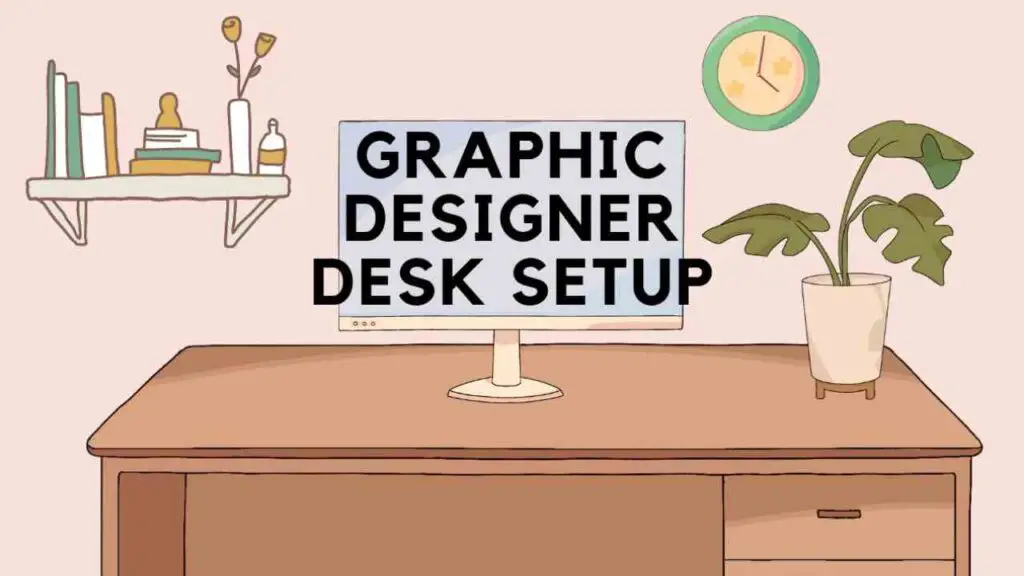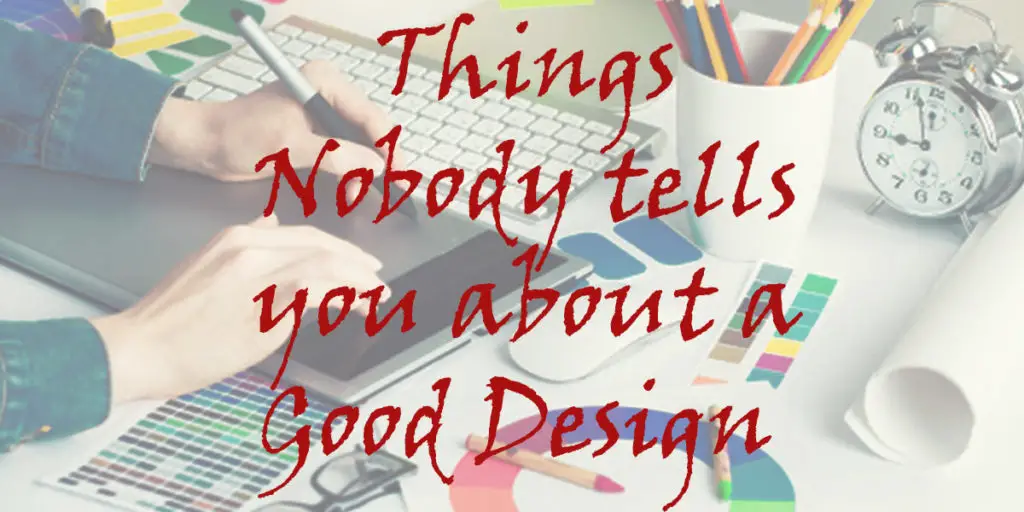THIS ARTICLE MAY CONTAIN AFFILIATE MARKETING LINKS! IN CASE YOU MAKE A PURCHASE THROUGH ONE OF THE LINKS, WE'LL GET A SMALL COMMISSION. WITH NO EXTRA CHARGES TO YOU. THANKS!!
Creating an optimal desk setup as a graphic designer is crucial for both productivity and creativity. Begin by choosing a spacious, sturdy desk that can accommodate multiple monitors, which are essential for design work. Ensure that your chair is ergonomic, offering lumbar support and adjustable settings to prevent fatigue during long hours of work. Position your desk to take advantage of natural light, but also include task lighting with adjustable brightness and color temperature to reduce eye strain. Let’s take a look at things to remember for Graphic Designer Desk Setup.
Graphic Designer Desk Setup
On your desk, set up a high-resolution monitor or dual screens for multitasking, and pair it with a quality graphics tablet for digital drawing and editing. Keep your workspace clutter-free by using organizers for your pens, notebooks, and other tools, and consider a monitor stand or shelf to elevate your screen to eye level. Cable management systems can help keep cords tidy and out of the way.
Incorporate personal touches like a small plant, inspirational prints, or a mood board to keep the creative juices flowing. Don’t forget about acoustics—if you’re in a noisy environment, noise-canceling headphones or a white noise machine can help maintain focus. Lastly, make sure to have a dedicated space for sketching or brainstorming away from the computer, which can be a simple side table with a comfortable chair. This comprehensive approach to your desk setup will not only boost your efficiency but also provide a pleasant and inspiring environment to work in.
Importance of Sunlight for Your Setup
Sunlight plays a pivotal role in the setup of a graphic designer’s desk, influencing both the physical workspace and the designer’s well-being. Natural light is known to regulate the circadian rhythm, which is essential for maintaining a healthy sleep-wake cycle, leading to improved focus, productivity, and overall job satisfaction. Exposure to sunlight during the workday can enhance mood, which is linked to better health and a lower rate of burnout.
From a practical standpoint, positioning a desk near a window to benefit from daylight can help graphic designers tackle analytical tasks more efficiently, as studies show that natural light boosts cognitive function. It also provides a balanced spectrum of light for color perception, crucial for design accuracy. However, it’s important to manage the intensity and angle of sunlight to prevent glare on screens, which can be achieved with quality curtains or blinds.
Moreover, a well-lit workspace can reduce eye strain and minimize the need for artificial lighting during the day, which can save energy and create a more comfortable working environment. In essence, incorporating natural sunlight into a graphic designer’s desk setup is not just about aesthetics; it’s a strategic choice that impacts health, efficiency, and the quality of creative output.
Good Graphic Tablet is a Must
A good graphic tablet is an indispensable tool for graphic designers, offering a multitude of benefits that enhance the creative process. Unlike traditional mediums such as pen and paper, a graphic tablet allows for a seamless transition to digital art, providing a platform where mistakes can be undone, and various brushes and effects can be experimented with. The pressure-sensitive stylus mimics the natural drawing motion, enabling designers to produce smoother curves and intricate shapes with precision.
This level of control and accuracy is difficult to achieve with a mouse or trackpad, making the tablet a superior choice for tasks that require fine motor skills, such as sketching, coloring, and photo editing. Additionally, the ergonomic design of tablets helps prevent strain and fatigue, allowing designers to work comfortably for extended periods.
Graphic tablets also streamline the workflow, as they are often equipped with customizable keys and dials for quick access to frequently used functions, which boosts efficiency. Moreover, compatibility with industry-standard software like Adobe Photoshop and Illustrator ensures that designers can integrate tablets into their existing workflows with ease.
In essence, a good graphic tablet is not just a tool but an extension of the designer’s hand, offering a more intuitive, efficient, and comfortable way to create and manipulate digital artwork. It’s a game-changer that can elevate the quality of design work and the overall experience of the creative process.

Don’t Forget Ergonomic Equipments
Ergonomic equipment is vital for graphic designers, who often spend prolonged periods at their desks engaged in intensive design work. Ergonomically designed chairs and desks can significantly reduce the risk of musculoskeletal disorders (MSDs), which are common in professions requiring repetitive motions or long hours in front of a computer. Proper ergonomic setup helps maintain good posture, supports the natural curve of the spine, and allows for height adjustments to align the monitor at eye level, preventing neck and eye strain.
An ergonomic chair with adjustable settings for height, lumbar support, and armrests can alleviate back pain and enhance comfort, enabling designers to concentrate better and work more efficiently. Similarly, an ergonomic keyboard and mouse reduce the strain on wrists and hands, lowering the chances of developing conditions like carpal tunnel syndrome.
Moreover, ergonomic equipment can lead to increased energy levels and enhanced focus, as comfortable workspaces minimize distractions from discomfort. Studies have shown that neutral hand and wrist postures facilitated by ergonomic tools can reduce error rates by 26%, and workers equipped with ergonomically optimized workstations can work up to 50% faster.
In essence, investing in ergonomic equipment is not just about comfort; it’s about creating a workspace that promotes health, well-being, and productivity, which are all crucial for the success and longevity of a graphic designer’s career.
Spacious, Sturdy Desk Will go a Long Way
For a graphic designer, a spacious and sturdy desk is the cornerstone of an efficient and productive workspace. A spacious desk provides ample room for the various tools of the trade, such as multiple monitors, a drawing tablet, reference materials, and other peripherals, which are essential for a streamlined workflow. The sturdiness of the desk ensures that it can support the weight of equipment without wobbling, which is crucial when precision is needed during detailed design work.
A large desk surface also allows for the organization of work into dedicated zones, such as a space for sketching, a digital creation area, and a place for administrative tasks, which can help in maintaining focus and reducing clutter. Moreover, a sturdy desk can be a long-term investment, as it is less likely to succumb to wear and tear, ensuring that the workspace remains reliable and professional for years to come.
In addition to practicality, the physical expanse of a well-chosen desk can influence a designer’s psychological state, providing a sense of control and capacity to handle complex projects. It can also accommodate personal touches and inspirational items, which are important for fostering creativity. Ultimately, a spacious and sturdy desk is not just a piece of furniture; it’s a vital component of a graphic designer’s creative ecosystem, supporting both the functional and psychological aspects of design work.
A Good Rig Will Never Let You Down
A high-performance rig is essential for graphic designers to handle the demanding tasks of modern design work. The ideal setup includes a powerful CPU, such as an Intel or AMD 64-bit processor with a minimum of 2 GHz speed, to ensure smooth operation of design software. A multicore processor is recommended for applications like Adobe After Effects, which require more power for rendering.
Graphic designers should aim for a minimum of 8 GB RAM, though 16 GB or more is advisable for handling large files and multitasking without lag. A dedicated GPU with at least 2 GB of VRAM is crucial for rendering complex graphics and smooth playback of animations. For storage, a solid-state drive (SSD) with at least 20 GB of free space is recommended for faster access to files and applications.
The rig should support a high-resolution monitor to accurately display colors and details, with a recommended resolution of 1920 x 1080 or higher for applications like Adobe After Effects. Additionally, designers should consider the monitor’s color accuracy and calibration capabilities to ensure that the designs look consistent across different devices.
Connectivity is also key, so the rig should have ample USB ports and possibly a Thunderbolt port for connecting peripherals such as tablets, external drives, and additional monitors. Lastly, an internet connection is necessary for software updates, cloud storage, and accessing online resources. This combination of hardware ensures that graphic designers have a reliable, efficient, and powerful workstation capable of bringing their creative visions to life.
A Good Monitor to See Colors Clearly
A monitor is a graphic designer’s window into the digital world where their creations come to life. It’s an essential tool that greatly influences the quality and accuracy of their work. A high-quality monitor offers better color accuracy, which is crucial for ensuring that the colors designers choose are consistent across various media. With a high-resolution display, such as 4K or Ultra HD, designers can see the finest details in their designs, allowing for precise editing and a clearer understanding of how the final product will appear.
The size of the monitor also matters; a larger screen can improve workflow efficiency by allowing multiple applications to be open simultaneously, which is beneficial for comparing designs and multitasking. Additionally, features like flicker-free technology and blue light filters help reduce eye strain, making long hours of work more comfortable.
Moreover, the aspect ratio and panel type of a monitor can affect the workspace layout and the way images are rendered, further impacting a designer’s work. For instance, a widescreen monitor provides more horizontal room, which is helpful for using multiple applications and comparing designs side-by-side.
In essence, the right monitor can transform a graphic designer’s workflow, not only by enhancing the visual quality of their projects but also by providing a more efficient and ergonomically friendly work environment. It’s an investment that pays dividends in the form of improved design quality and professional satisfaction.
Your Desk Your Choice
In conclusion, crafting the perfect desk setup is a personal journey for every graphic designer. It’s about creating a space that not only meets the technical demands of the profession but also resonates with the individual’s creative spirit. Remember, your desk is more than just a physical space—it’s a reflection of your identity as a designer and a catalyst for your creativity.
Invest in quality equipment that enhances your workflow, prioritize ergonomics to safeguard your health, and infuse your workspace with elements that inspire you. By doing so, you’ll build a foundation that not only supports your current projects but also adapts to your evolving design career. Embrace the process, and let your desk be a testament to your dedication to the craft of graphic design.







